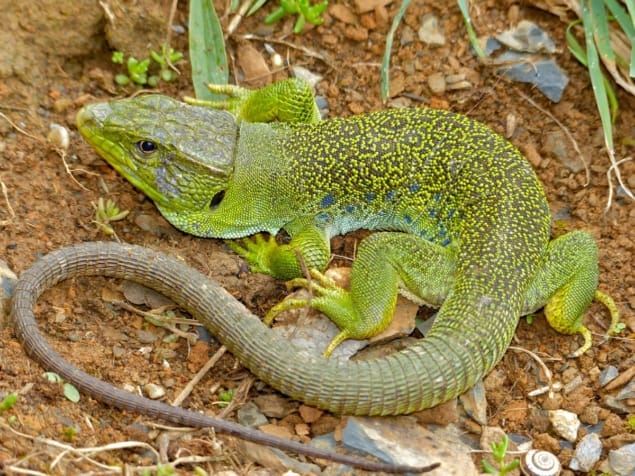Playmobil’s “robotic genius” figure, also known as ROBert, paid a visit to the International Space Station (ISS) this week. The toy blasted off to the ISS on Wednesday and was soon greeted by European Space Station astronaut Matthias Maurer. ROBert had a guided tour of the ISS and in a video report (above), materials scientist Maurer discusses what astronauts do in a typical day, where they sleep and what activities they can do in the microgravity environment.
But it wasn’t all just hard work, in the video ROBert can be seen enjoying a spectacular view of Earth from the ISS’s panoramic “cupola” window. “I learned how small and fragile our planet is,” remarks ROBert, “and that we only have this one.”
Meanwhile back on Earth, the ocellated lizard can be found in southwestern Europe and has green or black scales that help it camouflage to evade predators. As the lizard matures, individual scales change from one colour to the other, eventually forming a labyrinthine-like mosaic at adulthood.

In 2017, researchers at the University of Geneva simulated this scale pattern as a “cellular automaton” – a computing system invented in 1948 by the mathematician John von Neumann in which each element changes according to the state of neighbouring elements. Although the model agreed with observations, it contained 14 parameters and so the researchers began to look for a simpler description.
They turned their attention to the antiferromagnetic Ising model that was first developed in the 1920’s to describe the behaviour of magnetic spins that can be in two states and only interact with their neighbours. When the researchers modelled this onto a hexagonal arrangement, this simple two-parameter model could explain the lizard’s labyrinthine pattern.
“These patterns are generated by a complex system that can be simplified as a single equation, where what matters is not the precise location of the green and black scales but the general appearance of the final patterns,” says biophysicist Michel Milinkovitch. The team now plan to investigate other species with colour-flipping scales to shed light on whether natural selection leads to these patterns.
